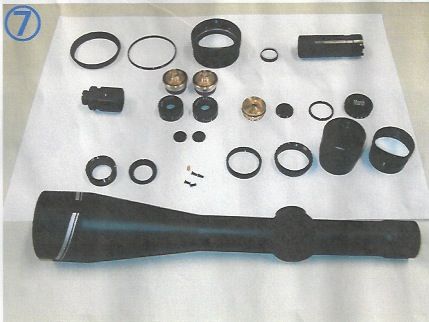March Scope internals
gabe ledesma
Registered User
Internal organs of a March scope?
Does anyone out there really know, just what exactly type of internal Nob adjustments a March scope has that is so much diff than a Leupold comp or a NF BR scope?
I dug out this photo of the internals of a 40X March Scope. Not very good quality,but you can count the parts. Hope this helps you make a decision. I will share a story which may or may not interest you.
Back in November 2012 ,I had dinner,at a Japanese restaurant, in the Dallas area, with James Kelbly and Turk Takano, two of the three people who actually went to Japan and toured the Deon Optical Inc. Manufacturing facility. at Nagano-Ken,Japan.
The third person is Stewart Elliott of Australia. James Kelbly and his family(Who I met) came all the way from North Lawrence,Ohio to watch his favorite Football team (Dallas Cowboys) play the Washington Redskins.
As it turns out, America's team(Dallas Cowboys) got beat, 38 to 31. During dinner,James told a very colorful story about his trip to Japan and two full days at Deon Optical,where he observed factory operations,specifically the work and materials that go into building a March Scope. To say that James was impressed with his visit is putting it mildly. I even know some of the menu selections he made when he went out to eat.
I totally enjoyed the evening and I thank My Friend Turk Takano for the invitation. I bet James Kelbly would be more than willing to share some facts about March Scopes.
Glenn


